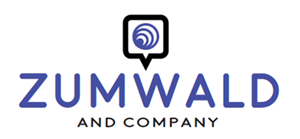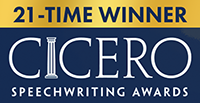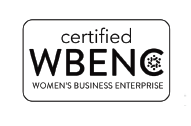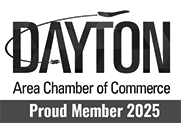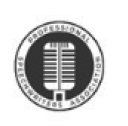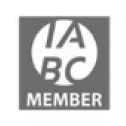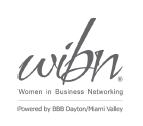How to improve public speaking: Get out of your own way
 Are you feeling stuck when it comes to public speaking? If so, you might be in your own way.
Are you feeling stuck when it comes to public speaking? If so, you might be in your own way.
Read on to discover how to improve public speaking by doing one simple thing to get out of your own way – and stay out of your own way – the next time you speak.
“Get Out of Your Own Way” by Dr. Mark Goulston and Philip Goldberg is a book with practical lessons for overcoming 40 self-defeating behaviors like procrastination, fear, quitting and more. As a speechwriter and speech coach who helps leaders learn how to improve public speaking, I was intrigued by No. 18: Talking When Nobody’s Listening.
A self-defeating behavior for sure.
Sometimes that can happen immediately, right after a speaker takes the stage, when a speaker begins with this opening line:
“Hello, everyone! Today, I’m here to talk to you about X, Y and Z.
“But first, a little bit about me.”
(Or worse: “But first, a little bit more about me,” if the speaker has been introduced by someone with good intentions who just read the speaker’s bio word for word.)
The speaker then begins talking about his or her background, education, career journey, volunteer work and other sundry pivots and tangents that happened along the way.
But nobody’s listening.
 Why is the speaker going backward?
Why is the speaker going backward?
Every time I hear a speaker begin a keynote speech or business presentation with this (line of warning) – “But first, a little bit about me” – I hear a long and slow collective breath being let out in the room, much like the sound of a deflating balloon.
Here’s what people in the audience are thinking:
- Wait – didn’t we already read this person’s bio on the website/in the press release/in the program?
- I hope this doesn’t take too long.
- Let’s get this part over with so we can get to why we came here in the first place.
- I thought we were ready to begin. Why is the speaker going backward?
Indeed: Why IS the speaker going backward?
If you’re not moving forward, you’re going backward
A few years ago Sarah Clatterbuck, a software engineering leader at YouTube, published an article about the peloton, the main group of racers in a bicycle race, and how the peloton taught her lessons that informed her career.
For leaders who want to know how to improve public speaking, there is some additional wisdom buried here.
 Clatterbuck writes:
Clatterbuck writes:
“The peloton is a dynamic, rapidly changing entity that is moving forward through the course of the race.
“In the peloton, if you merely try to defend or protect your position, you will actually be moving backward over time. You need to always be actively moving forward to stay in the front of the pack.
“There are several truths to the peloton … any good coach will tell you … if you’re not moving forward, you’re going backward.”
If you’re not moving forward, you’re going backward.
What a perfect reminder for speakers who are tempted to start a speech with, “But first, a little bit about me.”
When this happens, instead of moving forward with a message, the speaker is going backward.
This kind of an opening is a speaker’s attempt to defend or protect his or her position or role as the speaker.
If you are a speaker who opens your speech by merely trying to defend or protect your position – like a racer in the peloton – you will actually be going backward over time.
And that is the worst thing if you are the speaker: to go backward in the minds of your audience.
It is not only self-defeating – but also means you’ll have to work that much harder to make up for lost ground as you continue to speak.
 The antidote
The antidote
If you want to learn how to improve public speaking, here’s a better approach to consider so you don’t have to open with, “But first, a little bit about me”:
- Give the person who is introducing you something relevant to say that is connected to your talk and will set you up for success.
- Write it yourself.
This requires a lot of discipline and a little bit of creativity.
But it’s so much more fascinating than a (dutifully read) bio.
And it stops you from ever having to say, “But first, a little bit about me.”
Case in point: This CEO got out of his own way
I’ve been working with a CEO – a serial entrepreneur and inventor – who is getting ready to launch a new product.
In his industry, all the CEOs getting ready to launch new products tend to follow the same formula for their keynote presentations:
- They open with jazzy music and maybe even a jazzy video.
- The CEO walks on stage.
- The CEO then introduces himself – often with a slide in the background that includes a photo of him with five or six bullet points about who he is and what he’s done along the way to the top.
 And – you guessed it – these CEOs tend to open with lines like these:
And – you guessed it – these CEOs tend to open with lines like these:
“Today, I’m here to tell you about the launch of our new product.
“But first, a little bit about me.”
As I watched one of these recorded keynotes as background, it felt odd to me to see each of these CEOs live on stage – eager to engage with their audiences who were eager to hear what they had to say – handcuffed by that debilitating opening line:
“But first, a little bit about me.”
And then of course, that deadly slide.
Get on with it already!
I suggested to my CEO/entrepreneur/inventor that he might want to consider a different approach.
Was there someone in his organization who could introduce him – someone who could share relevant points about him and his venture that the audience needed to know upfront – so that when he walked on stage, he was ready to dive right in?
My CEO immediately thought of a key person in his organization, Chad, who had worked side by side with him over the past couple of years.
After the CEO told me more, I knew Chad would be perfect for this role.
To prepare this speaker introduction (which is always smart to write last, after the keynote speech is written), I spent some time with Chad and asked him lots of questions about the CEO.
The “insider” stories I heard from Chad gave me a new perspective on the CEO, the product and the launch that I did not have before.
What I learned would be perfect for a custom, authentic, captivating introduction by Chad that could easily be connected to the CEO’s keynote speech.
The CEO could then simply move forward.
 The speaker introduction I wrote for Chad on behalf of his CEO had these elements:
The speaker introduction I wrote for Chad on behalf of his CEO had these elements:
- A preview of the day’s purpose and importance (and what was in it for the audience)
- A shared experience between the CEO and the audience (to quickly establish common ground between the two)
- A glimpse into the relationship between Chad and the CEO, which allowed the audience to feel connected to the CEO by learning more about him as a person
- A couple of points from the CEO’s background relevant to the launch (only what the audience needed to know)
- A bit of drama and scene setting to arouse curiosity about what was coming next
- Promises: What the audience could expect to take away after today
Chad’s introduction was written with a sense of respect and admiration. As a result, the audience would feel this sense of respect and admiration for the CEO before he ever started to speak.
The goal for this introduction was clear: Open the hearts and minds of the audience, get them on the edge of their seats and set the CEO up for success.
How to improve public speaking and set yourself up for success
If you want to propel yourself out of the gate as a speaker, try getting out of your own way.
Don’t engage in self-defeating behavior and waste your precious opening lines by saying, “But first, a little bit about me.”
Instead, remember the peloton.
Do not try to defend or protect your position.
Instead, always be actively moving forward.
Because if you are not moving forward, you are actually going backward.
TIP: Make sure the person introducing you is the right person for this important job. What is this person’s connection to you or your organization (an encounter, relationship or shared experience)? Or is there someone else who might be a better person to introduce you and set you up for success?
Do you have a speech coming up and want to work with a speechwriter to get the best possible results?
Don’t wait any longer.
Request a 15-minute discovery call now with Teresa Zumwald, an award-winning speechwriter and speech coach, and get your questions answered.
